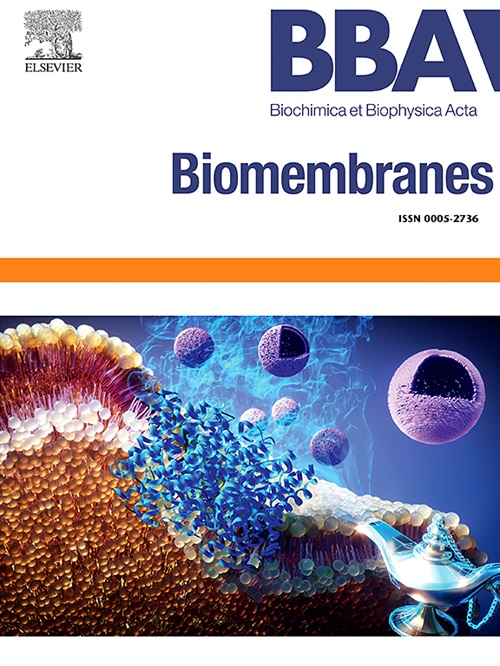Long-chain cationic gemini surfactants as drug retention adjuvant on liposomes. A methodological approach with atorvastatin
IF 2.5
3区 生物学
Q3 BIOCHEMISTRY & MOLECULAR BIOLOGY
引用次数: 0
Abstract
This study delves into the development and characterization of dipalmitoyl phosphatidylcholine (DPPC) liposomes incorporated with gemini surfactant (tetradecamethylene-1,14 bis(dimethyl tetradecyl ammonium bromide); 14-14-14) and atorvastatin, aimed at enhancing drug delivery efficiency for cardiovascular diseases. The integration of gemini surfactants into liposomes is investigated for its potential to improve atorvastatin encapsulation and retention, addressing the drug's poor water solubility and the limitations of conventional liposomal systems. Through a combination of dynamic light scattering (DLS), differential scanning calorimetry (DSC), and molecular dynamics (MD) simulations, the study reveals that the presence of gemini surfactants significantly reduces liposome size and polydispersity, indicative of a more uniform and potentially unilamellar structure. DSC analysis highlights a decrease in transition temperatures and an alteration in transition symmetry, suggesting enhanced stability and a favourable drug release profile at physiological temperatures. MD simulations provide insight into the internalization mechanism of gemini surfactants and atorvastatin within the liposomal bilayer, demonstrating their mutual incorporation facilitated by polar interactions. Spectrophotometry-based retention studies further confirmed that liposomes containing gemini surfactants exhibit superior atorvastatin retention capabilities, nearly doubling the encapsulation efficiency compared to conventional liposomes. This research highlights the promising role of gemini surfactant-incorporated liposomes as an efficient drug delivery platform for cardiovascular therapeutics, offering insights into the molecular interactions and structural dynamics underlying their enhanced performance.

长链阳离子双子表面活性剂作为脂质体上的药物保留佐剂。使用阿托伐他汀的方法。
本研究研究了双棕榈酰磷脂酰胆碱(DPPC)脂质体与gemini表面活性剂(十四甲基亚甲基-1,14二甲基十四烷基溴化铵)的结合;14-14-14)和阿托伐他汀,旨在提高心血管疾病的药物递送效率。将gemini表面活性剂整合到脂质体中,研究其改善阿托伐他汀包封和保留的潜力,解决药物的水溶性差和传统脂质体系统的局限性。通过动态光散射(DLS)、差示扫描量热法(DSC)和分子动力学(MD)模拟的结合,研究表明gemini表面活性剂的存在显著降低了脂质体的尺寸和多分散性,表明脂质体的结构更均匀,可能是单层结构。DSC分析强调了转变温度的降低和转变对称性的改变,表明在生理温度下稳定性增强和有利的药物释放谱。MD模拟揭示了gemini表面活性剂和阿托伐他汀在脂质体双分子层内的内化机制,证明了它们在极性相互作用下的相互结合。基于分光光度法的保留研究进一步证实,含有gemini表面活性剂的脂质体具有优越的阿托伐他汀保留能力,与常规脂质体相比,其包封效率几乎翻了一番。这项研究强调了gemini表面活性剂结合脂质体作为心血管治疗有效药物传递平台的前景,为其增强性能的分子相互作用和结构动力学提供了见解。
本文章由计算机程序翻译,如有差异,请以英文原文为准。
求助全文
约1分钟内获得全文
求助全文
来源期刊

Biochimica et biophysica acta. Biomembranes
生物-生化与分子生物学
CiteScore
8.20
自引率
5.90%
发文量
175
审稿时长
2.3 months
期刊介绍:
BBA Biomembranes has its main focus on membrane structure, function and biomolecular organization, membrane proteins, receptors, channels and anchors, fluidity and composition, model membranes and liposomes, membrane surface studies and ligand interactions, transport studies, and membrane dynamics.
 求助内容:
求助内容: 应助结果提醒方式:
应助结果提醒方式:


